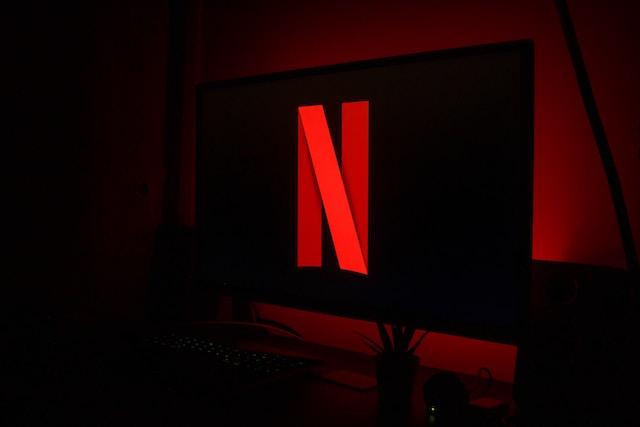The color red is associated with a range of psychological and emotional responses. Red is often linked to intense emotions, such as excitement, passion, and arousal. It can increase feelings of energy and create a sense of urgency or importance.
Red is commonly associated with love and romance in many cultures. It symbolizes desire, passion, and deep emotions. It can evoke feelings of love, attraction, and sensuality. It can evoke a sense of danger and trigger strong reactions. Understanding color psychology is crucial to understanding the impact of colors on our emotions and behaviors.

Red is a highly stimulating color that can increase alertness and attention. It is also used in traffic lights as stop signs. It can enhance mental and physical activity, making people feel more awake and focused. Red has been linked to increased appetite and food consumption. It is often used in food industry branding and restaurant settings to stimulate hunger and create a sense of urgency around the most popular colors.

Factors such as personal experiences, cultural background, and individual preferences can influence how people interpret and respond to the color. Additionally, the duration and intensity of exposure to red can also affect the emotional and mood effects it elicits.
Scarlet, a bright and vibrant shade of red that is often described as being slightly orange-red or crimson in appearance. It is a strong, intense color that carries warmth and energy. Scarlet is known for its eye-catching and bold nature, making it a popular choice in various contexts, including fashion, art, and design. Ruby is another shade of red that is often associated with luxury and elegance, and it can be used to add a touch of sophistication to any design or outfit.
Some key aspects of the psychology of the color red:
Energy and Intensity
Red is a highly stimulating and energizing color. It can increase heart rate, blood pressure, and respiration, creating a sense of excitement and intensity. It grabs attention and is often used to create a sense of urgency or importance.
In the realm of psychology, the color red is often associated with energy and intensity. Its vibrant and bold nature has a profound effect on human perception and emotions. Red has the power to stimulate and invigorate, evoking a sense of heightened activity and vitality. It captures attention with its commanding presence, demanding to be noticed.
The color’s association with physical arousal is reflected in its ability to increase heart rate, blood pressure, and respiration rate. It ignites passion and excitement, stirring up feelings of enthusiasm and exhilaration. Red exudes a sense of urgency and importance, creating an atmosphere of intensity and drive. Whether it signifies desire, power, or danger, the color red possesses an inherent dynamism that impacts our psychological state, infusing it with energy and intensity.
Passion and Love

Red is often linked to passion, love, and romance. It evokes strong emotions and is associated with desire and sensuality. Red roses, for example, are a symbol of love and romance. Understanding the meaning of colors is important in various fields, including art, marketing, and psychology.
Within the realm of psychology, the color red holds a deep connection to passion and love. It symbolizes the intensity of emotional experiences, particularly those related to romantic and affectionate connections. Red evokes the fire of desire, igniting a sense of sensuality and intimacy. It evokes the intense emotions associated with love, evoking feelings of warmth, desire, and attraction.
The color red can stir the depths of one’s heart, symbolizing the passionate and intimate aspects of relationships. Its rich hue is often linked to notions of romance, evoking a sense of love’s fervor and fervent connection. Whether it’s the red roses on Valentine’s Day or the flush of cheeks in moments of adoration, red carries with it the psychological weight of powerful masculine energy, passion, and love, speaking to the deep yearnings and desires of the human heart.
Power and Strength
Red is often associated with power, strength, and assertiveness. It can convey a sense of confidence, dominance, and authority. Red is sometimes used in sports to enhance performance and stimulate competitiveness.
The color red is strongly associated with power and strength. Its bold and commanding presence exudes a sense of authority and dominance. Red symbolizes courage, determination, and resilience. It carries an inherent energy that instills confidence and assertiveness in individuals. The color red has the ability to grab attention and make a bold statement, making it a powerful tool in communication and branding.
It is often used to signify strength and intensity, invoking a sense of power and control. Whether it’s the vibrant red of a superhero’s cape or the regal hue of a royal banner, red signifies the psychological impact of powerful color, power and strength, inspiring feelings of empowerment and fortitude in those who encounter it.
Attention and Alertness
In the psychology of color, red is known for its ability to capture attention and enhance alertness. Its vibrant and intense nature naturally draws the eye, making it difficult to overlook. Red stands out in its surroundings, demanding immediate focus and stimulating the senses. This attention-grabbing quality is particularly valuable in contexts where quick responses or heightened awareness are crucial.

Exposure to red has been found to increase mental and physical activity, keeping individuals more alert and engaged. The color red has been utilized in various domains, such as signage for warnings and emergency situations, to ensure that important information is noticed promptly. Whether it’s a stop sign on the road or an urgent message on a screen, red serves as a psychological signal that commands attention and promotes a state of heightened alertness and energy levels.
Appetite and Food
Red has been found to stimulate the appetite and increase food consumption. It is often used in the branding and advertising of food and beverage products to enhance their appeal and trigger hunger.
When it comes to the psychology of color and its impact on appetite and food, the color red plays a notable role. Red has been linked to increasing appetite and stimulating food consumption. Its vibrant and attention-grabbing nature can evoke a sense of urgency and excitement, particularly in relation to food.

Red is often used strategically in food marketing, restaurant branding, and product packaging to stimulate hunger and create a sense of desire. Research suggests that the color red can increase the perception of flavor intensity and enhance the overall sensory experience of food. This psychological association between red and appetite can be attributed to the color’s ability to activate physiological and emotional responses, making it a potent tool in influencing food preferences and consumption behaviors.
Aggression and Anger
While red can represent passion and strength, it is also associated with aggression and anger. It is believed that the color red can increase aggressive behavior and raise blood pressure, although these effects can vary among individuals.
Red has a stimulating and intense quality that can evoke strong emotional responses. It is linked to the physiological arousal of the body, which can increase heart rate and blood pressure. This heightened state of arousal can amplify feelings of aggression and anger in individuals. Additionally, red is often culturally associated with warning signs and symbols of danger, reinforcing its connection to aggressive emotions.
The color red has been shown to potentially increase irritability and aggressive behavior, although the effects can vary depending on individual differences and context. It’s important to note that while red may be associated with aggression, it does not directly cause aggression, and individual responses to the color can vary.
It is important to note that the psychological impact of red can be influenced by cultural, personal, and contextual factors. Different cultures may assign different meanings to the color, and individual experiences and preferences can also affect how red is perceived.
Examples in Branding
1. McDonalds’

McDonald’s, a prominent fast-food chain, has chosen the color red for its logo for several reasons, leveraging the psychology of color to its advantage:
Attention-Grabbing
Red is a highly attention-grabbing color that stands out from its surroundings. McDonald’s aims to capture customers’ attention and draw them into their restaurants. The vibrant red logo catches the eye, even from a distance, helping the brand stand out in a crowded market.
Stimulating Appetite
Red has been associated with increasing appetite and stimulating food cravings. McDonald’s strategically uses red in its logo and overall branding to evoke a sense of hunger and make its food appear more appealing and appetizing.
Energy and Excitement
Red is a color that exudes energy, excitement, and vibrancy. It aligns with the youthful and dynamic image that McDonald’s wants to project. The color red can create a sense of enthusiasm and urgency, enticing customers to visit their restaurants for a quick and energetic dining experience.
Brand Recognition
Over time, McDonald’s has established a strong brand identity associated with its red and yellow logo. The consistent use of the red color has contributed to building recognition and familiarity among customers worldwide. It has become a symbol of the brand’s reliability and ubiquity.
By incorporating the color red in their logo, McDonald’s strategically taps into the psychological responses and associations linked to the color, aiming to capture attention, stimulate appetite, create excitement, and build a recognizable brand identity.
2. KFC

KFC, the popular fast-food chain specializing in fried chicken, has chosen the color red for its logo and branding for several reasons, taking advantage of the psychology of color:
Appetite Stimulation
Red is known to increase appetite and stimulate food cravings. By incorporating red into their logo, KFC aims to make their food more visually appealing and appetizing to customers. The color red can evoke a sense of hunger and excitement, making their fried chicken and other menu items appear more enticing.
Boldness and Excitement
Red is a bold and energetic color associated with excitement and intensity. It aligns with the brand’s image of delivering bold flavors and a lively dining experience. The vibrant red color in the logo helps to create a sense of enthusiasm and energy around the brand, capturing attention and drawing customers in.
Brand Recognition
KFC has built a strong brand identity over the years, and the red color plays a crucial role in its recognition. The consistent use of red in the logo and across their branding has established a visual association with the brand, making it instantly recognizable to customers worldwide.
Tradition and Heritage
Red is a color often associated with tradition and heritage. KFC’s logo and branding evoke a sense of nostalgia and familiarity, reminding customers of the brand’s long-standing history and the classic appeal of their menu offerings.
By incorporating the color red into their logo, KFC strategically taps into the psychological impact of color to stimulate appetite, create excitement, enhance brand recognition, and reinforce their brand image as a provider of bold and flavorful food.
3. Netflix

Netflix, the popular streaming service, has chosen the color red for its logo for several reasons, utilizing the psychology of color in their branding strategy:
Passion and Excitement
Red is a color often associated with passion, intensity, and excitement. By incorporating red into their logo, Netflix aims to evoke these emotions and create a sense of anticipation and enthusiasm among viewers. The bold red color captures attention and conveys the idea that engaging and thrilling content awaits.
Energy and Boldness
Red is a color that exudes energy and boldness. It aligns with Netflix’s innovative and disruptive nature in the entertainment industry. The use of red in the logo reflects the company’s dynamic approach and commitment to delivering a high-energy and engaging streaming experience.
Memorability and Brand Recognition
The choice of red for Netflix’s logo has helped build strong brand recognition and recall. The consistent use of the red color across their branding creates visual consistency and makes the logo instantly recognizable to viewers. The association between the color red and Netflix becomes ingrained in the minds of consumers.
Contrast and Visibility
The bright red color provides strong contrast against various backgrounds, ensuring high visibility across different platforms and devices. This visibility helps the brand stand out and grabs the attention of potential viewers in a crowded digital landscape.
By incorporating the color red in their logo, Netflix strategically taps into the psychological impact of color to evoke passion, energy, and excitement. The use of red contributes to building a strong and memorable brand identity and helps the company stand out in the competitive streaming market.


Leave a Reply